===============================================
Glashutte Original Senator Calender Week Revisited
(c) Decksurgeon - July 2009
===============================================
Glashutte Original Senator Calender Week Revisited
(c) Decksurgeon - July 2009
===============================================
The senator Calendar week was first shown in 2006 as a Basel novelty and I honestly never took much notice of it till recently. Please forgive me for this oversight as I live in Singapore/Asia. If you dare mention a work schedule in terms of weeks - you'd more than often get a blank stare (and probably lose the deal!). It is uncommon outside of Europe to use the calendar week system to describe the a work schedule which is a complete shame.
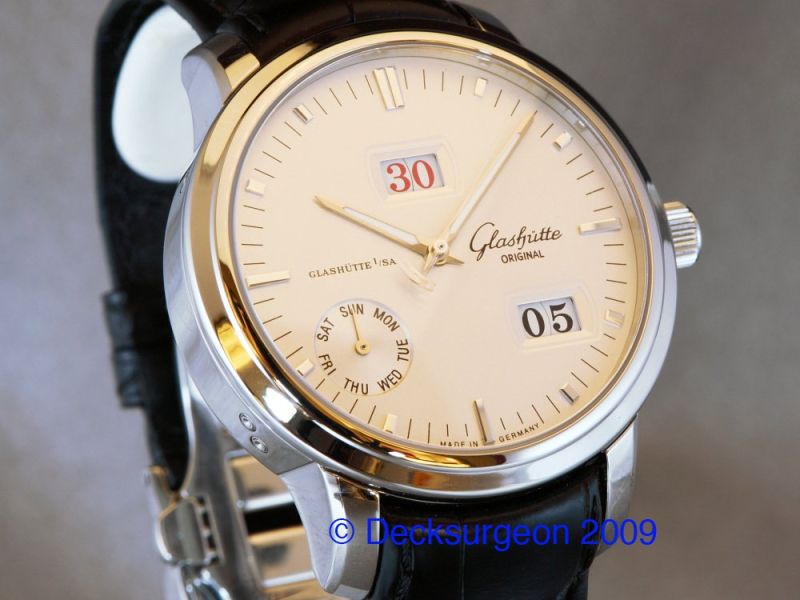
This particular watch from GO is actually more complicated than the perpetual calender and assembled in the factory on an assembly floor where only the most complicated watches are assembled (eg. Tourbillon & PanoRetroGraph). Even the Senator perpetual calender today is not assembled in the same area and relegated to the assembly floor below meant for 'simple' watches. Of course it would be horological blasphemy to say that a perpetual calendar is 'simple', therefore the calendar week must be considered an exceptional piece of masterpiece horological art.
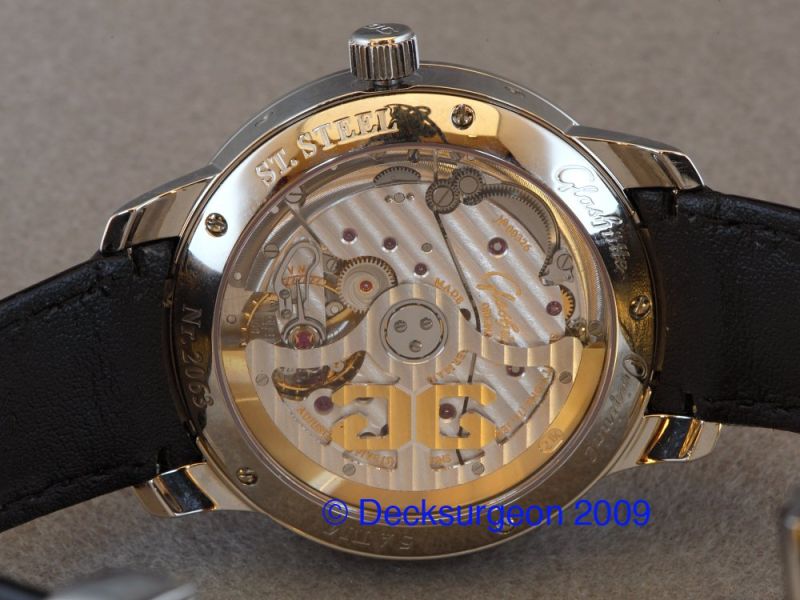
Present day, there are not many watches capable of displaying this 'calender week' information. If I recall recall correctly, the last Calender week display watch that was shown to the world was made by Nivrel. The Nivrel ran on an ETA 2892 and used a Dubois Depraz calendar module. The weeks were simply displayed in numerical form on the edge of the dial using a pointer style had to indicate the progression. The other watch that comes to mind is the Breitling Navitimer model 1461 also used a pointer system and these were not too complicated to engineer and construct.
Breitling Navitimer 1461 - The Calender Week is displayed on the subdial at 3 o'clock
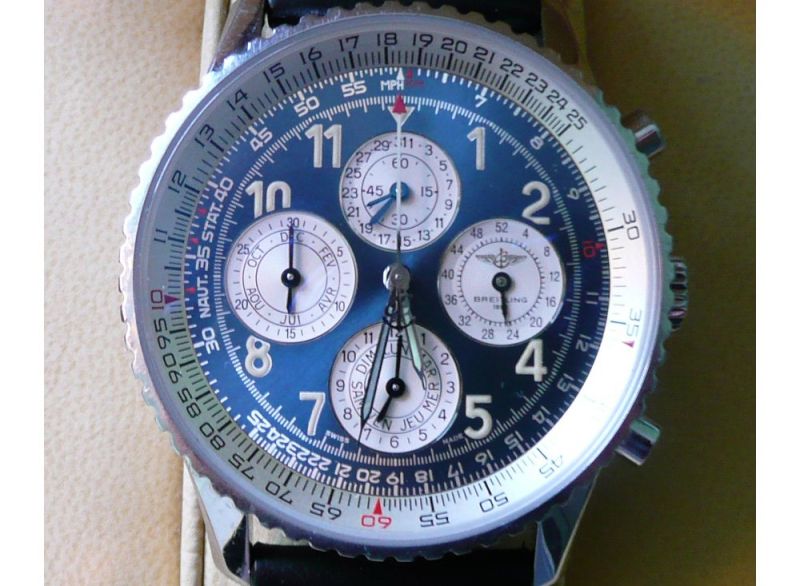
Nivrel's Calendar week is shown by the pointer on the outer edge.
Dubois Depraz calendar module used in the watch


Nivrel's Calendar week is shown by the pointer on the outer edge.
Dubois Depraz calendar module used in the watch

What makes the GO Calendar week different then?
The answer lies in the fact that the week is shown using a large 'digital' display format. The week is displayed in red as a pair of numbers and this is a similar format to the big date concept that GO is known for. This is especially technically demanding as large discs require substantial power to move in certain circumstances.
The distinctive large date format of Glashutte (in black).
The Calender Week is shown as a pair of red numerals
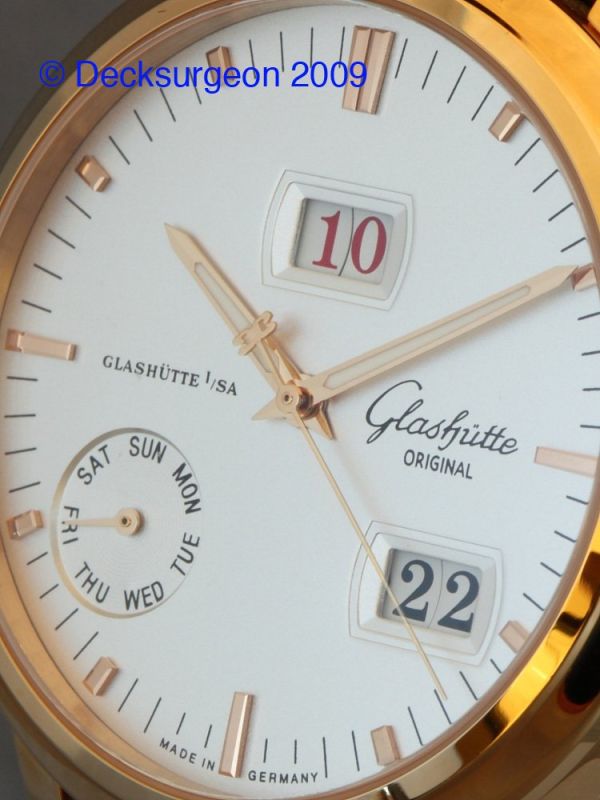
The Calender Week is shown as a pair of red numerals

Firstly, the entire calender week watch itself consist of 475 parts [*in comparison the complex IWC DaVinci perpetual calender consist of 474 parts] with 206 of these dedicated for the calender week module alone. The calender week watch actually has 3 springs in total; 2 springs from the mainspring double barrels of the cal 100 and one individual 17cm long (0.052mm diameter) for the calender module itself.
Secondly, the calendar week change always takes place on Sunday night with the week wheel turning one tooth further. During every change, the spring storing the energy is tensioned one-sixtieth in order to save up enough energy for the big change that occurs at the end of the year. Over the course of 52 weeks in the year, this additional 17cm long spring is slowly tensioned and acts as the energy store for when the year is up.
Thirdly, the change from calendar week 53 to 01 takes place when calendar week “54” is next on the list. A release opens the stored energy and the week wheel turns the seven steps necessary to get to get from 53 to calendar week 01. This process uses up the energy that the 3rd spring has been storing for the preceding 52 weeks.
And Lastly, if this was not enough, the movement designers of the watch also incorporated a centrifugal force regulator (i.e centrifugal brake) to proportion out the energy when this yearly 7-step advancement change occurs. The only other complication that I know of that requires a 'centrifugal regulator' mechanism is the minute repeater. [*In a minute repeater the centrifugal regulator is the spinning item that ensures and regulates the rate of the chime is not too hurried or not too slow when activated]
Under the dial of the GO Calender Week - 206 of the 475 parts alone are dedicated to the Calendar Week Mechanism with a total of 71 jewels in the entire movement.

Clean, uncluttered, understated elegance of the GO Calender Week - totally betrays the complex inner workings of the watch
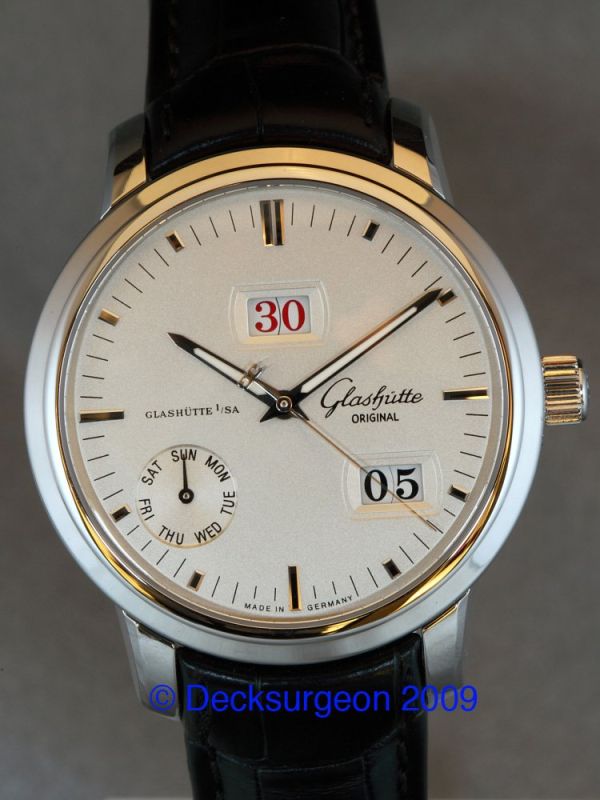

Clean, uncluttered, understated elegance of the GO Calender Week - totally betrays the complex inner workings of the watch

You'd compare this watch to the world's fastest understated shopping wagon - the Audi RS6 Avant.
A sheer wolf in sheep's clothing; where the exterior traits are of the anonymous Q-car variety. The true genius of the technical tour-de-force engineering only known to the few that can recognize its elegance from the understated exterior. The same goes for the GO calendar week - simplicity and elegance of the Senator Calender week display betrays its complex inner workings worthy of par- excellence standards from the house of Glashutte Original.
Another understated, uncluttered work of art.......RS6 Avant.

The Yellow Smilie gang!


The Yellow Smilie gang!

Did you know about the complex inner workings of the GO calender week prior to this photo essay?
Or are you just as surprised as I am in full knowledge of the fact that this particular watch from Saxony is another 'sleeper' that certainly should be given way more credit today.
BTW, I'm told now that the waiting time for a new Audi Exclusive customized car is approximately 12 weeks - perhaps time to put that Senator Calender week to good use then.*Grin Grin!*
GO's Cal 100-05 Automatic Movement with Twin-Springbarrels and a 55 hour power reserve in Handmade Excellence from Saxony
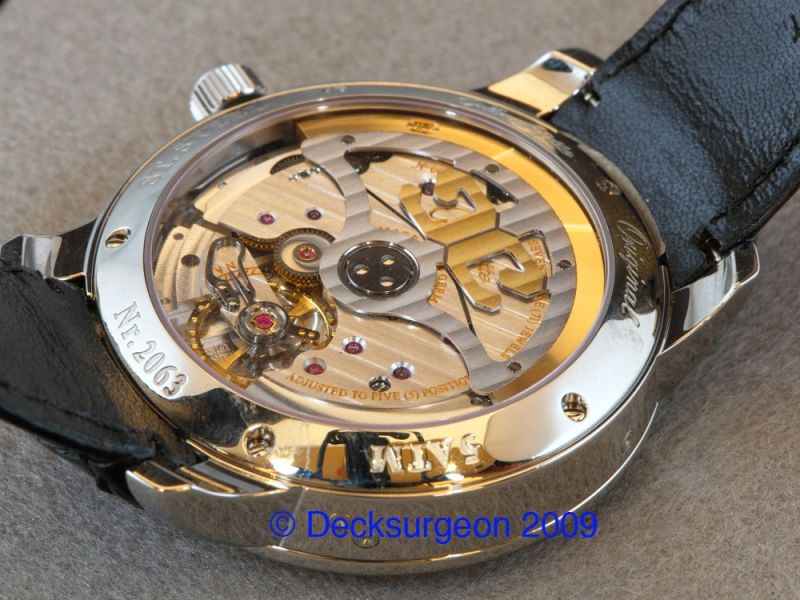


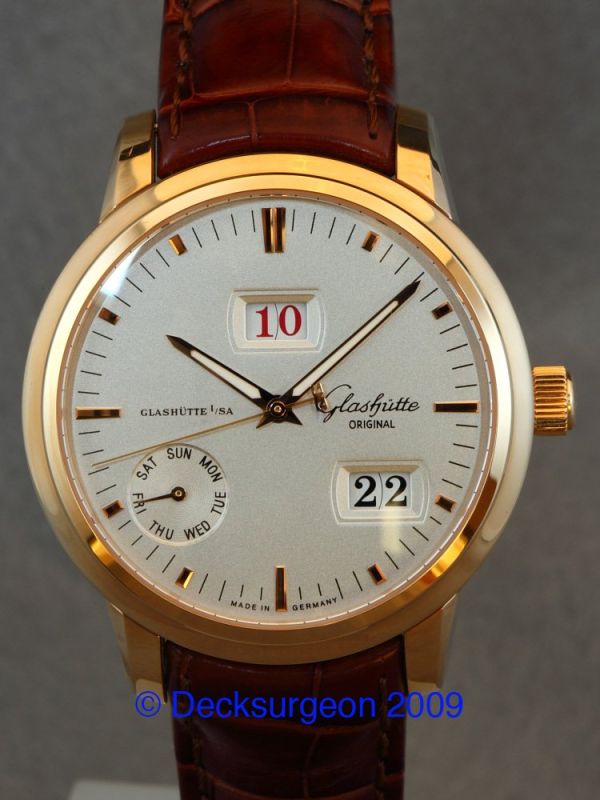
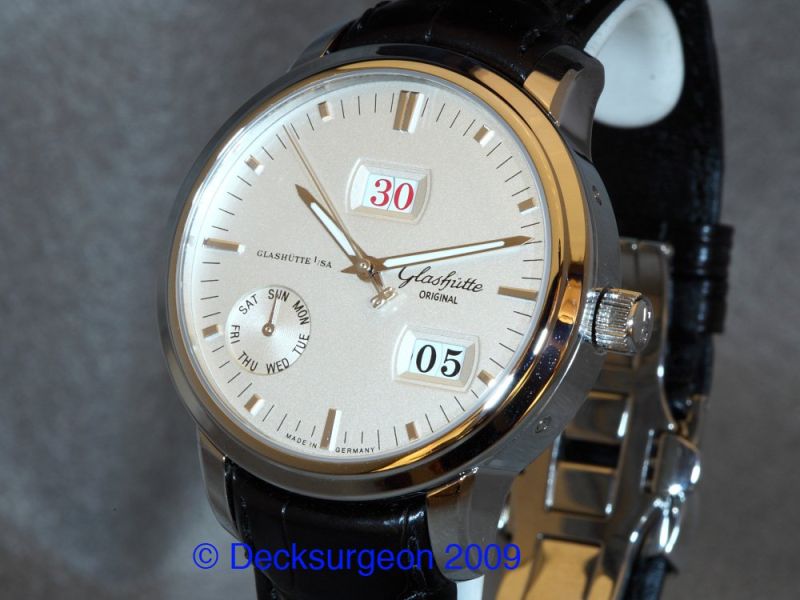








Comment